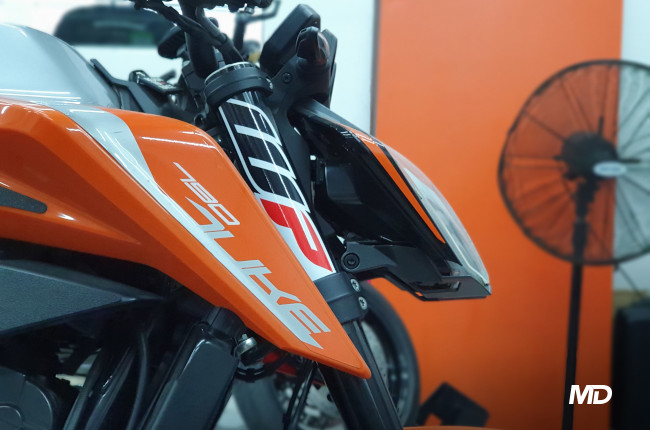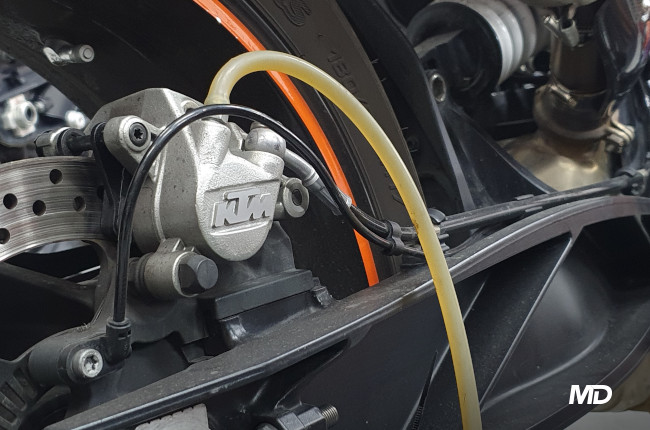Top 5 rules on European motorcycle maintenance
Do you own a European bike? Are you looking to own one? Are you worried about maintenance? Just follow these rules and you should be fine.

Taking care of your European machine doesn’t have to be a struggle. Just like clockwork, these things need constant care and attention, perhaps more so than their Asian counterparts. This list may be tailored to Euro bikes, and our experience with these types of machines, but it could very well apply to Japanese, Chinese, American, or any bike for that matter. With that, there are five rules to live by if you’re looking to buy and maintain a European motorcycle.
Rule 1: Timely and proper maintenance is key

Just like any other motorcycle, proper and timely maintenance is key to seamless and fruitful ownership of your Euro motorcycle. This goes for all other bikes regardless of origin, but perhaps we will emphasize this a little more since a good majority of European bikes are known to be high-strung, high-performance machines, as is the case with brands like KTM, Ducati, Triumph, Aprilia, and more.
Maintenance is the first rule in ownership of any bike. Make sure to adhere to the manufacturer’s recommended preventative maintenance cycle, and remember that earlier is better. Also, consider that there are other things to consider other than just oil changes and air filter replacement. Keep tabs on your coolant, your brake pads, brake fluid, and the other wear and tear consumables on the bike. It also goes without saying, but use the right fuel. If the manufacturer recommends that you use high-octane fuel, fill it up with the good stuff. If you don’t want your bike to knock and destroy itself because it ran the wrong fuel, then just do it right the first time and all the time.
It’s also important to consider the quality of your maintenance parts and your fluids. Most of us end up going with what the dealer or brand recommends, and it’s good to go with the recommendation more often than not. Always consider the quality of your lubricants and your replaceable parts whenever you conduct your maintenance intervals. Your bike, your dealer, and your bank account will thank you even if original equipment items may come at a bigger premium than most other motorcycles.
Rule 2: Ride the bike

It might be hard to believe, but motorcycles are designed to be ridden. Shocking, right? Not really. Brands factored in a good amount of riding when it conducted its stress tests. Not riding the bike and preserving its mileage may be detrimental to its longevity. We’ve had first-hand experience with this in the past with some of our previous motorcycles, developing problems after they’ve been stored for a long time.
For example, fuel can clog pumps, injectors, carburetors, or the tank’s taps and lines. Making sure that you feed your bike with fresh fuel is important. Not only that, but oil doesn’t like being sat and doing nothing. Coolant as well, since having it sit for long periods without getting used could clog pipes and hoses.
The thing is, your mechanical parts need to be “exercised” and you need to keep the fluids flowing to keep them from going bad too quickly and causing problems for your bike in the future. Leaving your bike sitting for long periods can cause your fluids to deteriorate, sensors to go bad, and even your battery to go flat. In short, just ride your bike. Keep the fluids flowing, the battery charged up the natural way, and feed it fresh fuel. Remember, it’s a motorcycle, not an ornament.
Rule 3: Proper Storage

Apart from riding your bike, you also have to make sure that you keep it in a shaded area to keep plastics, metals, paint, and other things from heating up and getting damaged by the harmful ultraviolet (UV) rays of the sun. Excessive heat can also damage your bike’s plastics and rubber elements. Rubber items on your motorcycle, like seals, gaskets, and even grips can be damaged by the sun, accelerate wear and cause leaks to form.
On top of that, rain can also be detrimental to your motorcycle if left out. If the downpour is bad enough, it can get into the cracks and crevices of your bike, get into the intake, and cause harm. While a light shower won’t do much to hurt your motorcycle, perhaps a typhoon or even a flood can spell its doom or a very expensive repair bill.
With that being said, it’s important to keep your bike under a roof, away from the sun and the potential rain that may come some day. Following that, you could consider a motorcycle cover for some added protection from the elements and the ambient heat of the nearest star to Earth.
However, going back to our previous rule, make sure that you don't keep the bike stored for too long. Batteries will go flat if not "exercised," oils can go bad if not run through the system, and other gremlins may come about due to disuse and neglect.
Rule 4: The casa is your friend

Believe us, we’ve also felt the sting of a hefty bill after a comprehensive service is done to our motorcycles. While we’re all for saving money, it’s also important to keep your dealer close to you and on speed dial should you ever need them to help you out. We’re well aware that dealers are pretty pricey compared to independent shops and service providers, but that doesn’t mean that they’re out to get as much money from you as possible.
Brands like KTM, BMW, Ducati, and Vespa among plenty of other brands, have their mechanic certifications, and training people properly to work on motorcycles is not a cheap endeavor. A lot of time, money, and effort goes into the brands’ respective training programs, and on top of that, by going to the accredited service center, you will be assured that the service that you get is approved by the manufacturer, giving you the luxury of having experienced hands and eyes on your motorcycle. Apart from that, you may think that you’re going in for just an oil change, but if an accredited mechanic sees something wrong with your bike, they’ll call your attention and ask if you’d like to have the issue sorted at once. Of course, the comprehensive experience adds up when you’re handed the bill, but you’ll be left with a bike that’s in roadworthy condition, at least according to the accredited service center.
Also, if you bring your bike outside of the casa to get it serviced and you develop a problem later on, it’s not likely that a service center will allot a free back job to you. One benefit of paying the dealer premium for service is the added benefit of being able to go back to the dealer for any issues that may arise following the service interval. The thing is, by going to a dealer, you’re also paying for accountability. The dealer’s service center has safeguards and guarantees for its service, otherwise, the price wouldn’t be justified. Of course, you have to consider that no brand is perfect and that there are both "good" and "bad" dealerships. It's best to get to know your dealer and do your research on which casa is best.
Rule 5: Keep the warranty

Finally, remember to keep the warranty. Don’t do any wild modifications while your motorcycle is still in its warranty period. Instead, make sure that you stick to your manufacturer’s recommended maintenance cycles, and make sure to stick to original modifications that won’t compromise the safety and working order of your unit.
Most manufacturers will rule that engine modifications like engine control unit (ECU) remapping, removing the catalytic converter, and changing the internals of the motor will void the warranty on top of other things that will alter the way the motorcycle’s engine performs. On top of that, playing around with the electricals and splicing wires left and right will also be grounds to void your bike’s warranty. Sometimes, the electrical system is just as important as your bike’s mechanical parts when we’re talking about making it run reliably.
While we’ve listed a bunch of items, it’s important to remember that your bike’s manufacturer will likely detail all of the important details about its warranty policy on your warranty booklet, which should be included in your bike’s owner’s kit. Remember that the warranty is there to protect you, and voiding it prematurely may be a hassle to resolve with your dealer.
Related Articles
-
Is your motorcycle out of warranty? Be sure to check these items ASAP / Featured Article
If your motorcycle is out of warranty, it’s now your duty to make sure you stay on top of its maintenance no matter what, or run the risk of facing a hefty repair bill.
-
Think twice before installing these 3 motorcycle modifications / Featured Article
When it comes to upgrading your motorcycle, you may want to think twice before installing these 3 mods.
-
Is it normal for my motorcycle to backfire? / Featured Article
If you’ve ever wondered why your motorcycle makes pops, bangs, and crackles upon deceleration, here are a few reasons why.
-
Here are 5 easily overlooked maintenance jobs that can leave you stranded / Tips & Advice
Getting stranded is a huge pain in the butt. Be sure to keep these 5 things in check so as to have a worry-free ride.
-
5 telltale signs that your brake fluid needs replacement / Featured Article
Husqvarna has debuted its 2024 model range in the global market, consisting of updates to the TE and FE enduro models.
Latest Features
-
Big bike versus small bike: which one is better for your lifestyle? / Featured Article
Here are a few tips to decide if you should get a big bike or small bike depending on your lifestyle.
-
Axial versus radial calipers - brake technology explained / Featured Article
Today, let’s talk about the differences between radially and axially mounted calipers, and determine the situations which are ideal for either.
-
3 things that make the Honda ADV 160 the perfect small-displacement all-rounder / Featured Article
Here are three reasons why the new Honda ADV 160 is one of the best small-displacement scooters in the market today.











